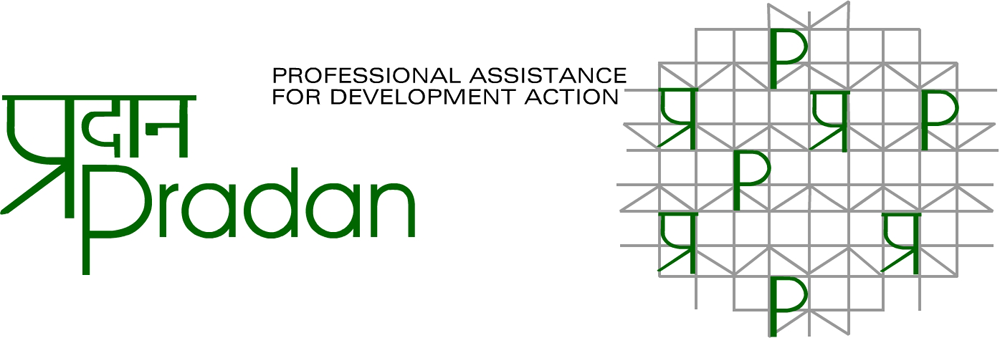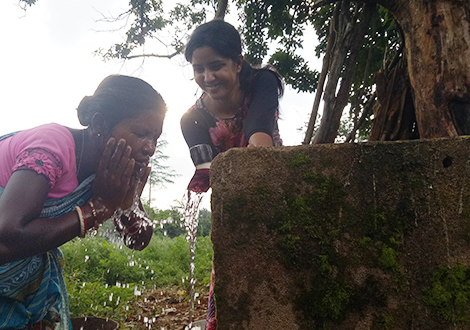The Search For The Elixir Of Life
Working with Ho tribal women to resolve the perennial crisis in Kalikaprasad village is as much an important personal journey as it is a professional journey.
Soumyashree from PRADAN
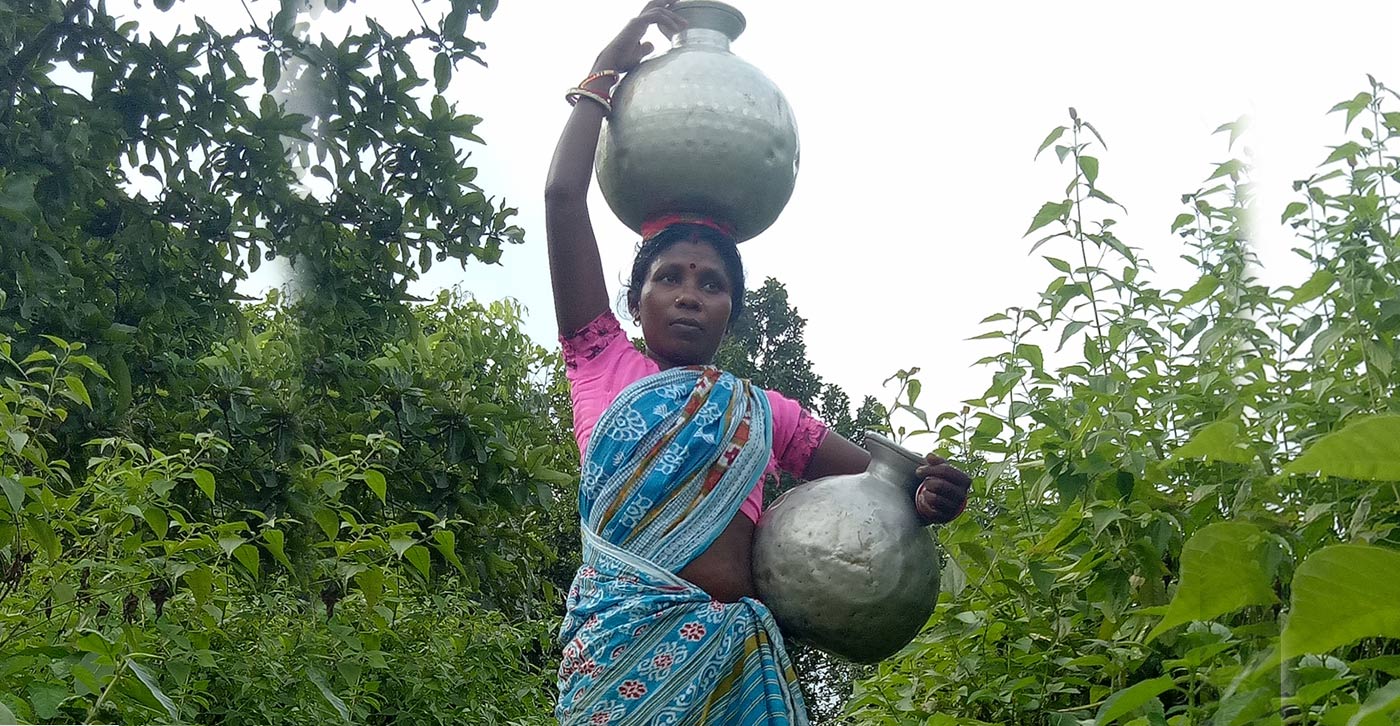
Photo Courtesy – Soubhagya Ranjan Ratha
Two large water pots - one on the head and the other clung to her waist seemed to overpower the frail frame of Kuni. Four other women were ahead of her in a slow-moving procession, a sight familiar in rural India. They greeted me warmly as I parked my bike near the village school. Later, at the Self Help Group* (SHG) meeting, I could not take my eyes off Kuni. She looked so pale. I touched her forehead. It was burning. I closed my eyes for a bit. Images of Ho people with their songs and dance, drums and festivals, impoverished yet happy despite their ragged clothes, broken mud houses, bulging tummies and visible rib-cages and skinny limbs of children, anemic and undernourished women, came flooding to my mind.
Kalikaprasad village is located in the buffer zone of the famous Similipal Biosphere Reserve in Mayurbhanj district of Odisha. Development has largely bypassed this village and villages in such hinterlands of India.
‘Three years!’ I contemplated.
I had been working in this remote rain-fed village with the Ho tribes to ensure food security and enhanced incomes from their farms for the last three years. Much had changed. The SHGs in the village, in these years, had grown in strength and there was a visible sense of new aspiration in the women. My own understanding of development from “a top-down initiative” had evolved in this period to “a people-driven empowerment approach”.
The issue of women travelling a kilometer to fetch water had always bothered me. Yet, I was unsure how to resolve that. That summer day I thought, ‘But today there had to be a start.’
I broached the issue of water scarcity in the village.
The women started talking together. It was something close to their hearts and an issue they faced every day.
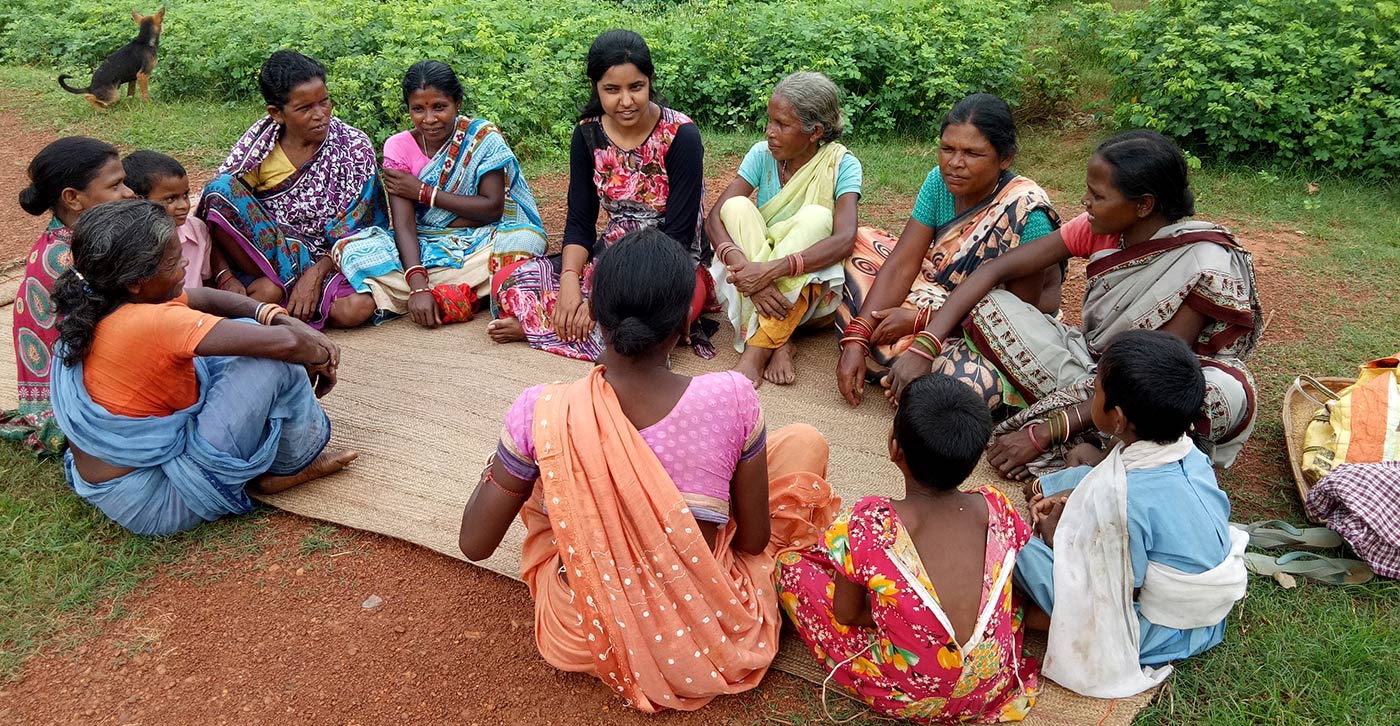
Photo Courtesy – Soubhagya Ranjan Ratha
“Let us work together to resolve it. There must be some way.”
“Do you want to have a look at the source of all life in this village?” Malti asked.
I knew what she was talking about. I smiled.
“Chalo, Chalo, let’s go”
Everyone got up. This was going to be a long walk. I requested Kuni to go home and rest. She refused to move even an inch in the other direction. We walked up the terrain to a stunning view of the Gurgudia mountains.
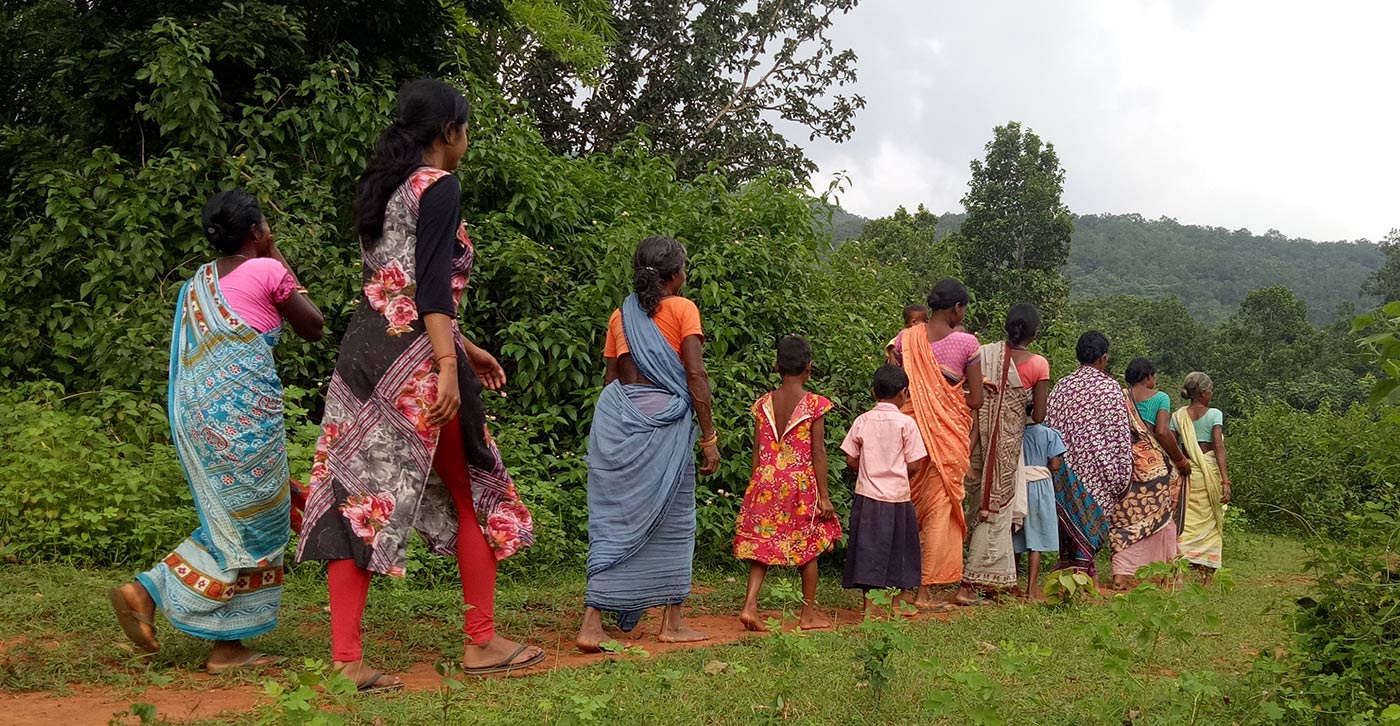
Photo Courtesy – Soubhagya Ranjan Ratha
At 1500 feet, gushed out the elixir of life- Gameya Jharna, a perennial water stream. The women knew the solution. As someone working on rural development, I just needed to help them join the dots.
The plan was to bring the water from the mountains to the village through a pipeline.
Our mission was clear: water at doorsteps. The monsoon rains were coming soon. Work had to be completed before that. That started a whole set of frantic activities in the days that followed.
We utilized funds under the Mahila Kishan Samridhi Pariyojana** (MKSP). SHG women negotiated with vendors for PVC pipes for better pricing. Construction began but it was not without its share of hiccups. There was an elephant attack one night, damaging PVC pipes. Many meals were skipped in the hot summer but the spark of change had been lit. We were swept away in a wave of optimism. My cloak of just being a development practitioner was washed off even before the first rains. I felt an inexplicable bond with the women. I felt one with them.
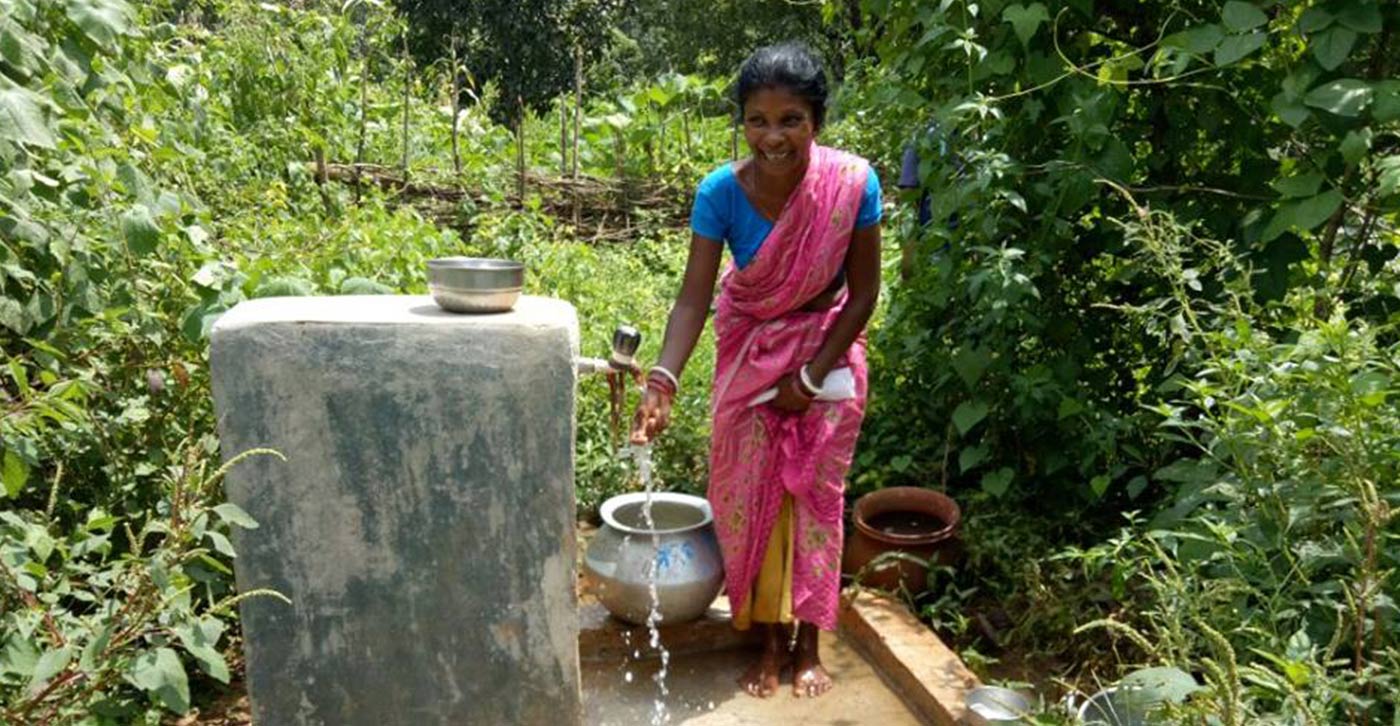
Photo Courtesy – Soubhagya Ranjan Ratha
And like magic, even before the skies opened up, flowed the first drop from the tap!
“We got our best return for the hardest of our labor when water came out from the tap. I touched it; it was so pure!” the happiness was visible on Kuni’s face.
Water, priceless water, was flowing near their homes for drinking and into their backyards.
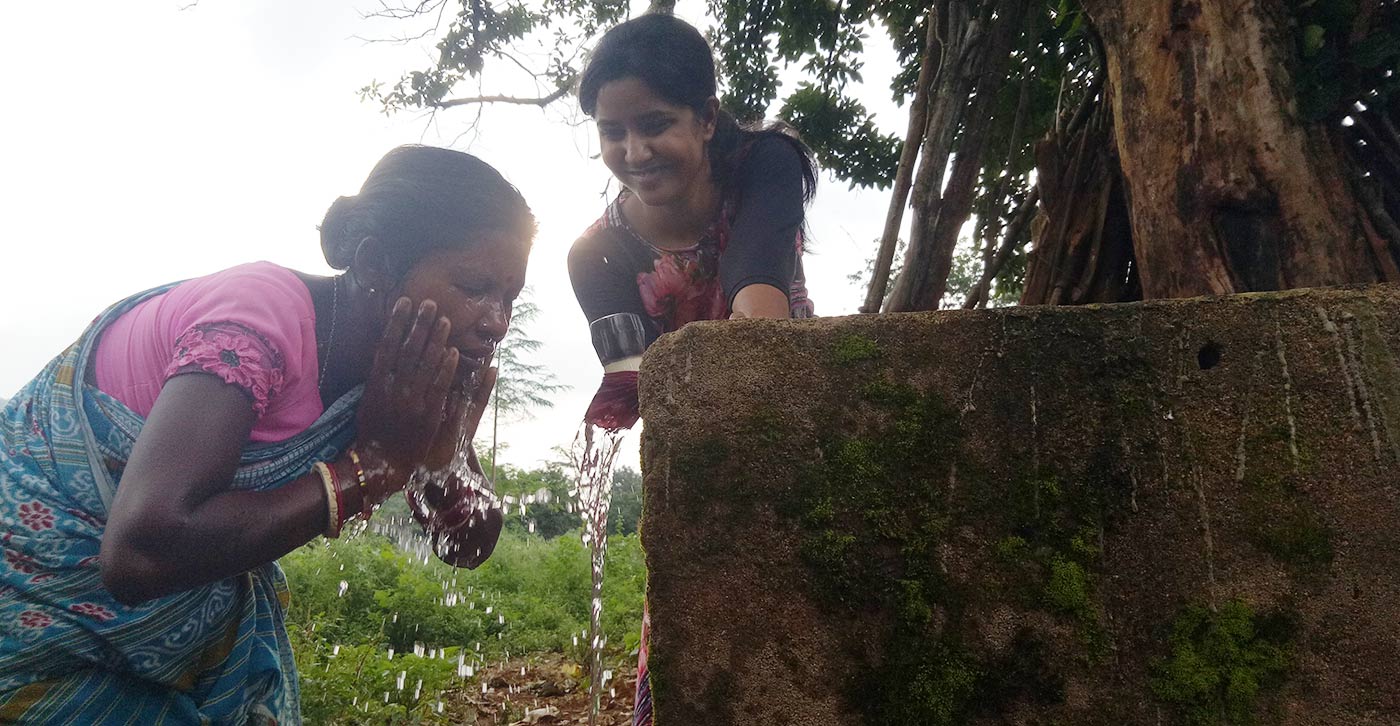
Photo Courtesy – Soubhagya Ranjan Ratha
The tedious march of women with large pots on their heads has finally stopped at Kalikaprasad. Kuni and I walk up to the Gameya Jharna one evening.
“Source of all life”, she whispers.
“Reaching your doorsteps”, I whisper back.
And we can’t hold back our smiles. Or our tears.
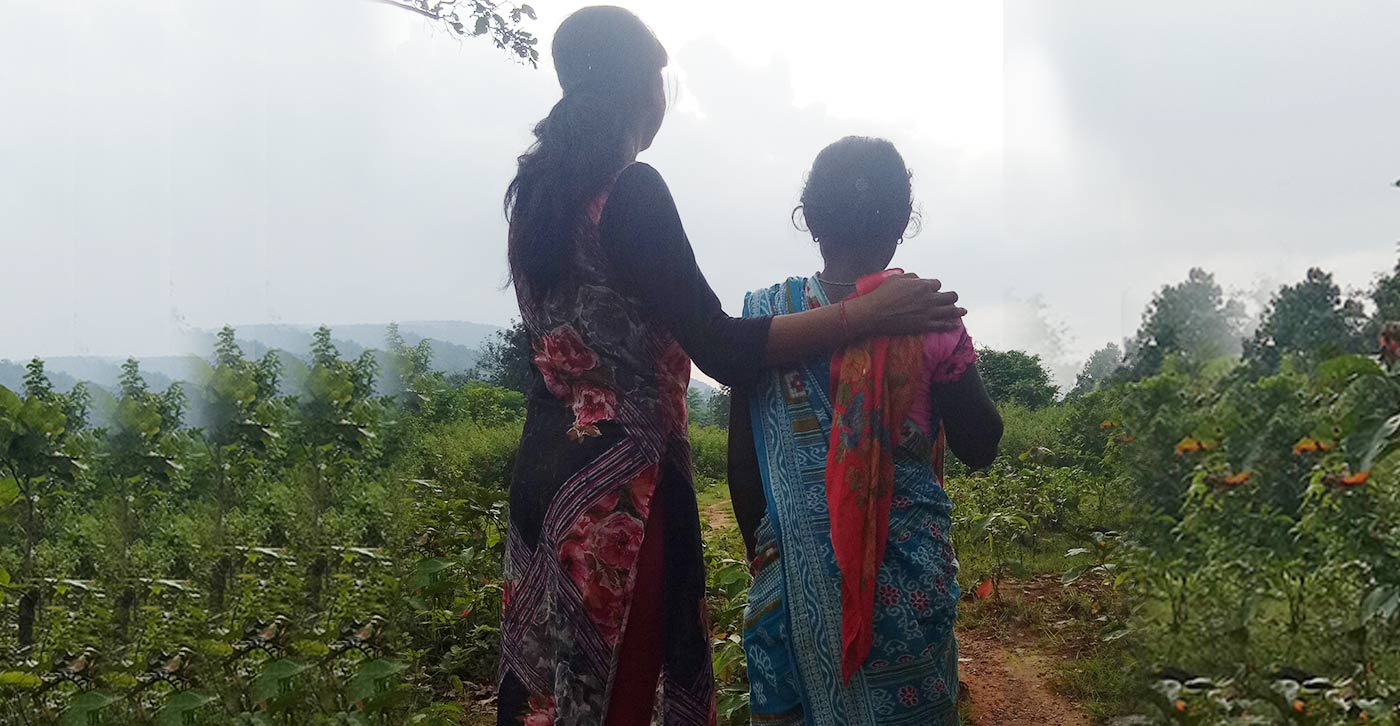
Photo Courtesy – Soubhagya Ranjan Ratha
* Self Help Group (SHG) is usually a collective of 10-15 poor rural women, which meets periodically to save small sums of money. As this pool of money grows, they inter-loan to cater to emergency credit needs, thereby reducing their dependency on money lenders. SHGs also provide a platform where PRADAN engages with the community to improve their livelihoods, ensure year round food security and work on other pertinent issues.
** A government program
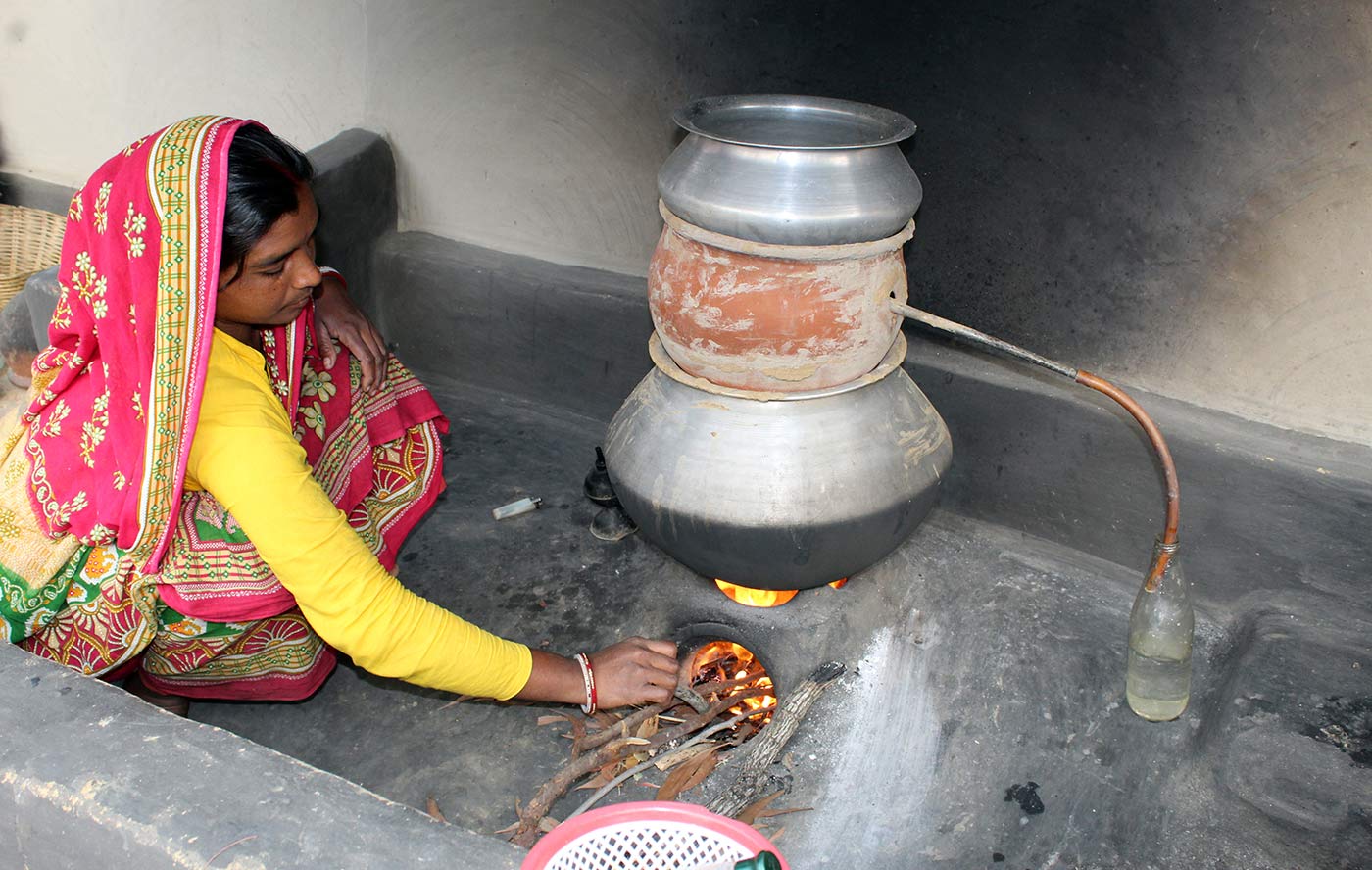
Organization: Professional Assistance for Development Action
Designation: Employment Facilitator
Number of Positions: 1
Locations: 1)Coimbatore, Tamil Nadu
PRADAN aims at providing relevant employability skills to young women from its states of operation – Odisha, Bihar, Jharkhand, Chhattisgarh- and help them get linked to appropriate employment opportunities. A major destination of employment is in the four southern states of Telangana, Andhra Pradesh, Karnataka, Tamil Nadu and Delhi NCR Region in potential sectors such as manufacturing, automotive, e-commerce, garments, textiles, hospitality, healthcare and retail industry. PRADAN is looking for a person to liaison with employers and young women who are engaged so that they work in a dignified work environment, able to retain themselves and build a long-term career for themselves. The person would be reporting to Integrator, PRADAN.
Key Deliverables:
- To liaise with the employers to ensure proper employment contracts are executed
- Take up visits to employment facilities to ensure that the conditions of employment contract are being practiced such as timely payment of remuneration, protection through insurance, PF, ESIC and other staff welfare measures, dignified working conditions, measures against harassment and discrimination, etc.
- To interact with the young women employed to understand about their welfare and sort out issues if any related to their employment
- Facilitating Life skills/ employability skills training with candidates placed in formal jobs.
- To facilitate the young women to pursue their career aspirations and arrange for their upskilling
- To liaise with skill building institutes (both public as well as private/CSR)
- To remain in contact with agencies working in the employment space to understand the scope for employment in various sector and skills in demand
- Establish strong relationships with Vendors, Outsourcing agencies, HR agencies, staffing companies and other relevant stakeholders to generate employment opportunities.
- To conduct job fairs in coordination with Employers/HR agencies and field teams.
- To conduct pre-placement, post-placement and career guidance activities with candidates.
- To support candidates in job retention.
- To document the impact of the intervention
- To represent PRADAN in meetings, events and forums in consultation with the Team Lead
QUALIFICATIONS, EXPERIENCE AND COMPETENCIES:
Education
Applicants must have Degree/Post Graduate Degree/ Diploma preferably in Social Sciences, Rural Development/ Management or equivalent, from a reputed institute.
Experience
(1) Minimum 3 to 5 years of experience in rural / urban development / skilling / employability programmes.
(2) Experience of working with employment generation programs is preferable, and not mandatory.
Skills and Competencies:
(1) Good written and oral communication skills in English and functional communication in Hindi and Tamil is preferable
(2) Excellent interpersonal skills
(3) Excellent team skills
(4) Willing to travel
COMPENSATION OFFERED
Compensation offered to the selected candidate shall be commensurate with qualifications, experience, and past salary history.
LOCATION
The job requires the person to be on the go; can operate from Coimbatore but should be willing to visit the employment facilities on a regular basis.
Founded in 1983, PRADAN has been at the forefront of innovations in rural development and has played a significant role in the design and implementation improvement of major rural development programmes. Given the deep deprivation in rural pockets, particularly among tribal and vulnerable groups, we promote sustainable livelihoods, integrated with work on issues of Gender, WASH, Health, Nutrition, Climate Change, Skilling and Governance. We currently work across 8 states, reaching out to 2.8 million households in collaboration with more than 100 NGO partners. PRADAN is an equal opportunity organisation. To learn more, please visit us at: www.pradan.net.
Position Overview:
As an Executive (Communications), the incumbent is supposed to be a knowledgeable, self-motivated and passionate individual with a creative bent of mind. The major focus area would be to promote and help flourish the practice of reflective writing and process documentation. The role involves content generation, curation, presentation and publication of articles for internal forums and external agencies including mainstream media. The person will also be responsible for organising training events for the same. Creating and implementing the media strategy to showcase PRADAN’s successes and challenges will be another key aspect of the position.
Job Description/Responsibilities
- Plan and support to produce high-quality, well-written, and visually appealing content to influence audiences: donors/partners and government agencies. Content may include blogs, articles, website content, infographics, media articles, case studies, opinion editorials, policy briefs, videos, social media content, and interactive reports.
- Cultivate and maintain relationships with key media contacts, journalists, bloggers, and influencers through PR agency.
- Oversee media outreach efforts, including pitching stories, securing press coverage, and responding to media inquiries.
- Create internal newsletters, memos, and other communications to keep employees informed and engaged.
- Plan and create marketing assets like brochures, flyers, banners, newsletters, e-mail designing for CRM, webpage designs, and donate pages.
- Identify analytical topics and co-write with concerned staff members to convert the topics into reflective long essays for knowledge creation.
- Work with other members of the communication team to implement the communication strategy across PRADAN’s programs to include both internal and external communications.
- Foster a collaborative and inclusive team culture that encourages creativity, innovation, and continuous improvement.
Qualification:
The qualifying degree is a minimum of 16 years of education (A Master’s degree in English literature, or any other social science stream).
A degree or diploma in Mass Communication from a reputed institute is preferred
- 60% and above throughout career.
- However, the applicant will be eligible if they have score between 50-59% in any one degree except the qualifying degree.
- For humanities and social science courses: 55% and above in the qualifying degree.
- Medium of instruction and examination of the last qualifying degree should be English.
Experience:
- Minimum 2 years of work experience
- Preference for candidates with experience with any media/publication or a Civil Society Organisation (CSO)
Skills and Competencies:
- Self-starter with passion to drive excellence in development sector communication
- Ability for content creation for impact stories
- Managing and creating long narrative/ reflective writing
- Handling press releases
- Ability to network well with internal and external stakeholders
- Designing emails for CRM
- Excellent written and verbal communication skills (mainly in English), with a keen attention to detail and proficiency in crafting engaging narratives
- Demonstrated history of publishing articles in media or journals
- Creative thinking and problem-solving skills, with a passion for storytelling and a knack for translating ideas into compelling content
- Knowledge of a designing software like Adobe Photoshop/InDesign is a plus
- Willing to travel extensively in remote rural India
Nature of Engagement: Regular position with a probation period of six months.
Remuneration: Based on qualification and experience the CTC would be in the range of INR 8 to 10 lakhs per annum. The CTC includes basic pay and other allowances. Apart from this, provision of deferred benefits such as PF, Gratuity, NPS, Insurance (Term life insurance, hospitalization insurance for self and dependents and accident insurance policy) are provided.
Place of posting: In PRADAN locations (possibly district town or state capital)
Selection Process:
Only short-listed candidates will be contacted. Those shortlisted will be invited to a selection process in Noida, tentatively in the first week of September 2024.
PRADAN is an equal opportunity employer. Women candidates are encouraged to apply.
Apply to:
Interested candidates with the relevant background and fulfilling the eligibility criteria are visit our website https://www.pradan.net/join-us/#careers and fill the ‘Application for Executive (Communications)’.Applications close by August 31, 2024.

